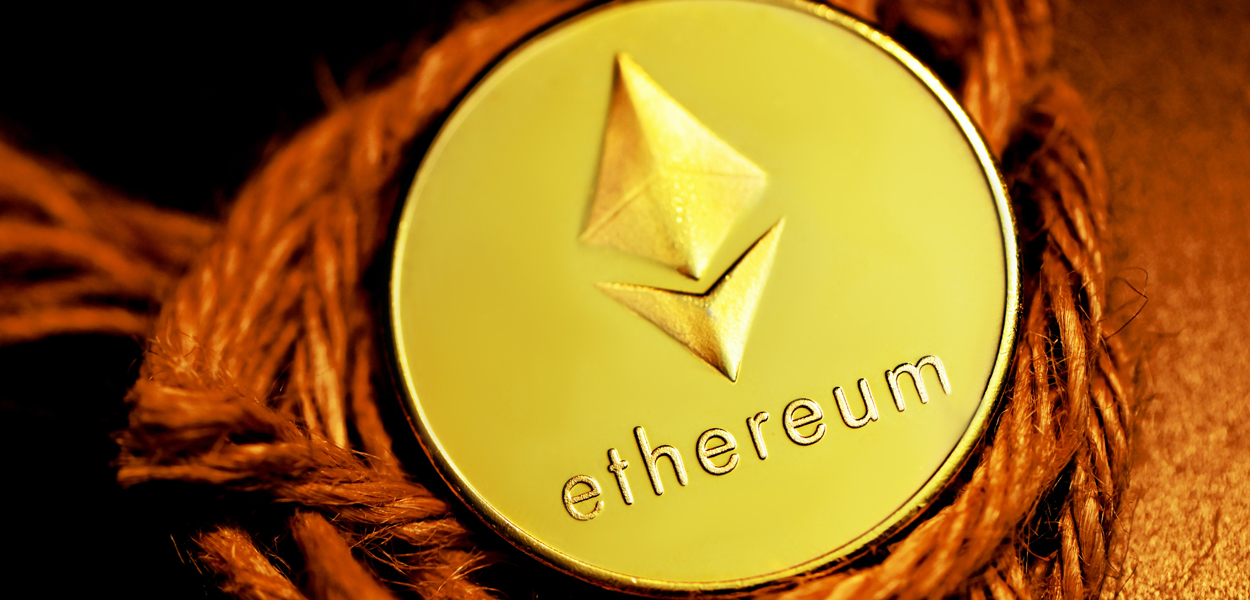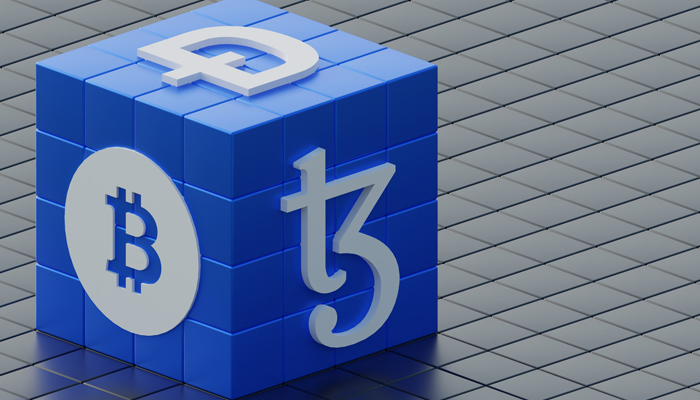Wrapped Tokens Guide
A Guide To Wrapped Tokens
December 29, 2022 15:17 AM
Wrapped Tokens Guide
December 29, 2022 15:17 AM

Wrapped refers to a crypto token whose value is linked to another cryptocurrency. The word "wrapped token" is used since the original asset is wrapped in a wrapper. It's an electronic vault that permits the wrapper version of it to exist on a different blockchain.
Different blockchains have different functions. They aren't able to communicate with each other. The Bitcoin blockchain needs to be made aware of Ethereum. Ethereum blockchain. But, with the use of wrapped tokens, more bridges could connect various blockchains.
The crypto community may have been aware of wrapped Bitcoin and crypto tokens. This article will look at the various types of wrapped passes available in crypto, the purpose of covering permits, and what they mean for you as a crypto trader or investor. Blockchains such as Bitcoin and Ethereum have distinct protocols and functionalities. Due to the fundamental differences between their algorithmic systems, they need help communicating..
Although this separation protects each blockchain's autonomy and security, it also undermines the concept of an interoperable system in which data and information can be exchanged.
For instance, in the context of decentralised financial institutions (DFI), where the need for an efficient, rapid, and smooth flow of money is essential, the wrapped crypto tokens can be used in a proper application.
Specific blockchains that are more recent, like Polkadot, are designed to address the interoperability issue. But it was essential to develop a solution that would enable communication between earlier networks, such as Bitcoin and Ethereum, which is why wrapped tokens were invented.
Wrapped crypto tokens and cryptocurrencies are used with defi.com and linked to the value of the original crypto or assets such as shares, gold, stocks, and real estate. Defi platforms.
The asset's original value is wrapped to create a virtual vault, and a new token is designed to allow transactions with other platforms. Wrapped tokens enable the use of non-native assets on any blockchain. They also allow bridges between networks and enable interoperability across the cryptocurrency market.
They could be used to represent anything from art and collectables to commodities and crypto assets such as equity and stocks, fiat currencies, and real estate. Since wrapped tokens are linked to another purchase, they must be monitored and controlled by a custodian institution that binds and removes the asset. This is a problem in the world of decentralisation and cryptography. Wrapped Bitcoin, referred to as BTC, was the first wrapped Bitcoin token to be used on the Ethereum blockchain via smart contracts, allowing investors to make a steady income. Apart from Bitcoin, the list of wrapped tickets also includes additional assets that generally conform to Ethereum ERC-20.
As strange as it may sound, although ERC-20 tokens are issued on Ethereum, the Ethereum platform (ETH) cannot be used in conjunction with these standards as it was designed before their development. Thus, much like Bitcoin, Ether needs to be wrapped to meet other criteria for ERC-20 tokens. As a result, an Ethereum-based tokenized variant of Ether is created that runs on the Ethereum platform.
Other blockchains, such as Cardano, Polkadot, and Solana, have begun exploring wrapped tokens to make it easier to access DEF applications.
Another recently launched project is the bLuna token, a wrapped Luna token traded at any time or to secure collateral on other protocols of the Terra network. That is an e-commerce platform that is growth-driven and price-stable.

It is generally accepted that stablecoins were the earliest kind of tokens wrapped in a wrap, with a significant distinction from the more well-known clad coins. For instance, a stablecoin such as USDT (Tether) is protected by the dollar. But Tether doesn't have a specific amount of USD for every USDT that is held. Its reserves are composed of the following assets: money, equivalents to cash receivables from loans, investments, and other loans, among others.
There are two kinds of wrapped tokens: a redemption table and a cash-settled one. They cannot be exchanged for the underlying asset. However, redemption table tickets permit investors to trade the token for support. Different blockchains use house-wrapped tokens. For example, covered privacy coins can be found on ZCash or Monero.Monero and ZCash blockchains
At the request of merchants such as Airswap, CoinList, 0xAAVE, and Maker, the custodian will mint on a specific platform, such as Ethereum, depending on, for instance, how much of the initial token is sent.
Similarly, when the wrapped token is converted back to the original asset or cryptocurrency, such as Bitcoin, the buyer will ask the custodian to remove the ticket from its reserves. But for every BTC that exists, for instance, there is one bitcoin that a custodian holds.
Creating and managing wrap tokens is a problem in the crypto field because the need for a custodian trust to hold the funds is against the aim of an open, decentralised blockchain.
Custodians are still required as traders cannot use independently wrapped tokens for cross-chain trades. But technology is changing quickly, and we could get some decentralised options soon.
When it was first launched in January 2019, the very first wrapped Bitcoin (BTC) technology was designed to bring Bitcoin possibility and potential liquidity onto the Ethereum network, as well as the flexibility and versatility of ERC-20 tokens.
Although the initial BTC could not be used for decentralized financial (Defi) transactions, a wrapped Bitcoin could substitute for the original asset and be used to transact in the Defi ecosystem or any other decentralized application within the Ethereum network.
Wrapped Bitcoin is an impressive advancement in the cryptocurrency industry. Although the worth of wrapped Bitcoin is similar to the original, the functionality is a significant benefit. It enhances the likelihood of using Bitcoin for different purposes, such as Defi.
A BTC owner can lend bitcoin via smart contracts by connecting their wallets with a decentralised platform and getting a fixed interest rate annually. Additionally, they use their crypto as collateral, which is automatically transferred to the lender if they fail to repay. With this kind of financing, lenders to investors can still earn a profit even during bear markets, even if the asset's value decreases.
Three actors play a vital role in designing and implementing the BTC protocol.
The DAO (Decentralized Autonomous Organization) comprises 17 members from the Defi space that will be holding multi-signature (multi-signature) agreements to allow or eliminate BTC traders and custodians.
The necessity for a token came about due to the rapid growth of Defi, which is valued at billions of dollars and goes into loans, options, derivatives, and various other financial applications. The demand for BTC for Defi as an asset used as an underlying one was so great that it needed to be transformed into an ERC-20-compliant token that could be used to join the Defi ecosystem. Ethereum is the foundation of the ecosystem. It is possible to access the complete order books of WBTC trading right here. Ethereum.
Wrapped tokens are becoming increasingly seen as an investment worth considering in cryptocurrency, in which decentralised financial systems will have a significant impact. In less than a year, around 800 million dollars' worth of bitcoin was converted to the BTC format, giving some idea about the present amount of capital that the industry has.
Wrapped tokens can help create more bridges to other blockchains. Wrapped tokens are the tokenized version of an asset that is part of a different blockchain.
Wrapped tokens can open an environment in which capital is more efficient and applications can exchange liquidity. Contact our DEF and blockchain experts today for more information.
Strategy
Design
Blockchain Solution
Development
Launching
Testing
Maintenance
Contact US!

Plot 378-379, Udyog Vihar Phase 4 Rd, near nokia building, Electronic City, Phase IV, Sector 19, Gurugram, Haryana 122015
Copyright © 2025 PerfectionGeeks Technologies | All Rights Reserved | Policy
Contact US!

Plot 378-379, Udyog Vihar Phase 4 Rd, near nokia building, Electronic City, Phase IV, Sector 19, Gurugram, Haryana 122015
Copyright © 2025 PerfectionGeeks Technologies | All Rights Reserved | Policy